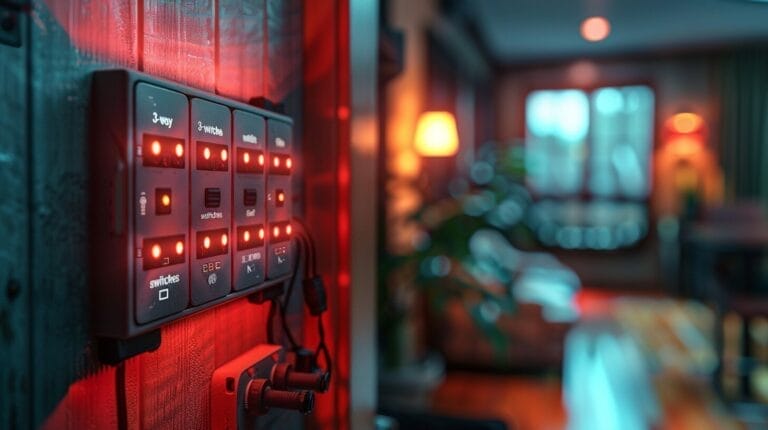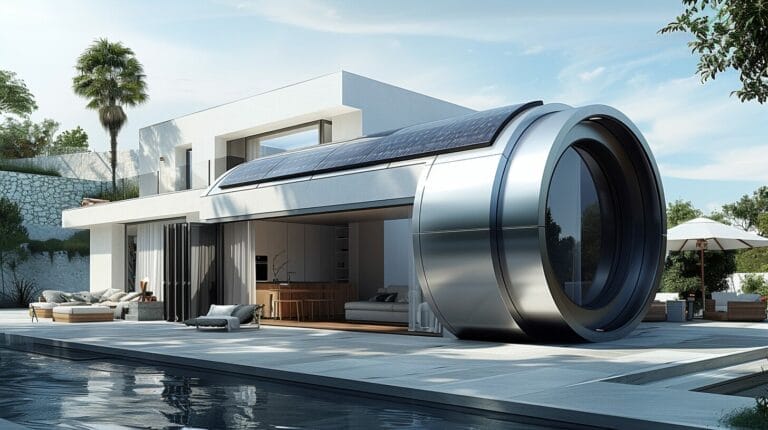UV Lights Work: How UV-C Light Technology Kills Viruses
Exploring how UV lights function and the advantages they offer. UV lights emit ultraviolet rays, which come in three types: UVA, UVB, and UVC. Each type serves different purposes, from tanning to sterilization. While UVA penetrates deeply, UVB affects the skin’s outer layers, and UVC has germicidal properties. These lights are widely used in various industries for tasks ranging from disinfecting surfaces to curing nail polish. However, with these benefits come potential health risks.
How do we balance these advantages with safety concerns? Let’s examine this further.
Key Takeaways
- UV light is a type of electromagnetic radiation with three categories: UVA, UVB, and UVC.
- UV lights can sanitize surfaces and environments by killing viruses and bacteria, especially with UVC.
- Healthcare and other industries utilize UV lights for sterilization and improved efficiency.
- Overexposure to UV lights poses health risks, making controlled use important.
- UV lights are increasingly used in water and air purification, offering future potential in emerging technologies.
Understanding the Basics of UV Lights

UV light, or ultraviolet light, is a type of electromagnetic radiation with wavelengths shorter than visible light but longer than X-rays. It’s divided into three categories: UVA, UVB, and UVC. Each type has unique properties and impacts on both the environment and technology.
UVA, with the longest wavelength, penetrates deep into the skin and is responsible for aging effects. UVB, with a medium wavelength, affects the outer skin layers, causing sunburns and playing an important role in vitamin D production. UVC, with the shortest wavelength, is the most energetic and has germicidal properties, making it effective for sterilization. However, UVC is mostly absorbed by the Earth’s atmosphere and rarely reaches the surface.
Natural sources of UV light include the sun, which emits all three types. Meanwhile, artificial sources, such as mercury-vapor lamps, black lights, and UV LEDs, are designed to produce specific UV wavelengths for various applications.
The Role of UV Lights in Different Industries

In healthcare, UV lights are indispensable for sterilization and disinfection. Hospitals and clinics use UV-C light to eliminate harmful pathogens, ensuring sterile environments for patients and healthcare workers. This technology greatly reduces the risk of infections and promotes a safer healthcare setting.
The beauty industry also leverages UV lights, primarily for tanning and nail curing. Tanning beds utilize UV-A and UV-B light to simulate sun exposure, giving users that desired sun-kissed glow. Additionally, UV nail lamps cure gel polish quickly and efficiently, making them a staple in modern nail salons.
In the field of photography, UV lights are used for enhancing image details and in forensic investigations. Photographers employ UV light to capture intricate details invisible to the naked eye, while forensic experts rely on UV light to detect bodily fluids and other substances at crime scenes.
| Industry | UV Light Application |
|---|---|
| Healthcare | Sterilization, Disinfection |
| Beauty Industry | Tanning, Nail Curing |
| Photography | Image Enhancement, Forensics |
These diverse applications highlight the transformative impact of UV lights across various sectors, driving innovation and improving efficiency in multiple fields.
The Benefits and Risks Associated with UV Lights

UV lights are exceptional at sanitizing surfaces and environments, effectively killing viruses and bacteria, making them invaluable tools in healthcare settings where disinfecting is paramount. This ability to sterilize without chemicals aligns perfectly with our pursuit of innovative, eco-friendly solutions.
However, while UV lights enhance health and safety by reducing the spread of pathogens, they must be used wisely. Exposure limits are essential because overexposure can lead to severe health risks. For instance, while short exposures can boost vitamin D production and improve mood, prolonged exposure can result in skin cancer and eye injuries. It’s essential to balance the benefits with the risks to make the most of this technology.
To safely harness UV light’s potential, we should always use protective gear and adhere to recommended exposure limits. This guarantees that we reap the health benefits while minimizing the risks. Understanding both the power and the peril of UV lights enables us to innovate responsibly and effectively in our quest for healthier environments.
Choosing the Right UV Lights for Your Needs

Selecting the right UV lights for your needs requires careful consideration of factors such as purpose, intensity, and durability. It’s crucial to identify why we need the UV light, understand the specifications and ratings regarding intensity, and consider the durability based on the materials and build quality.
Innovative Applications and Future of UV Lights

UV lights are transforming various industries with their innovative applications and hold promising potential for the future. From water and air purification to fighting pandemics, UV lights are making a significant impact. Emerging trends and technologies in UV lighting promise even more innovative applications in the future.
| Application | Current Use | Future Potential |
|---|---|---|
| Water Purification | Municipal water systems | Advanced home purification systems |
| Air Purification | HVAC systems in buildings | Personal wearable purifiers |
| Fighting Pandemics | Hospital disinfection | Portable UV sanitizers for daily use |
| Emerging Technologies | UV LEDs in electronics | UV-C drones for large-scale sanitation |
The future of UV lights is bright, and we’re just beginning to scratch the surface of their potential.
Conclusion
In exploring UV lights, we’ve unveiled their vital functions and diverse applications across industries. We comprehend the immense benefits they offer, from sanitizing surfaces to enhancing photography.
However, it’s important to weigh these advantages against the potential health risks of overexposure. By selecting the right UV lights and using them responsibly, we can harness their power safely and effectively.
As technology advances, we’re excited to see innovative uses for UV lights in the future.
Frequently Asked Questions
How do UV lights work?
UV lights emit ultraviolet radiation, specifically UVC light. UVC light damages the DNA and RNA of bacteria, viruses, and other microorganisms, preventing them from replicating and causing infections.
What are the benefits of using UV lights for disinfection?
UV lights offer several benefits for disinfection:
- They effectively kill bacteria and viruses, including the coronavirus.
- UV lights provide a cleaner environment, reducing the spread of germs.
- They improve air quality by reducing airborne pathogens.
Are there different types of UV lights available?
Yes, there are different types of UV lights suited for various applications:
- UV Lamps: These are used for surface sterilization and disinfection in areas like hospitals and laboratories.
- UV Wands: Handheld devices used for disinfecting surfaces quickly.
- UV Air Purifiers: Installed in HVAC systems or as standalone units to disinfect and purify the air.
Can UV lights help in killing mold and mildew?
Yes, UV lights are effective in killing mold and mildew spores. They provide a long-term solution for maintaining a mold-free environment by preventing mold growth on surfaces.
Is it safe to be exposed to UVA and UVB rays emitted by UV lights?
No, UVA and UVB rays can be harmful to the skin and eyes. It’s essential to follow safety precautions and avoid direct exposure to UV light. Proper shielding and safety measures should be in place when using UV lights for disinfection.







